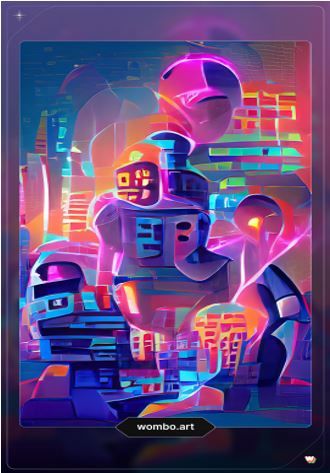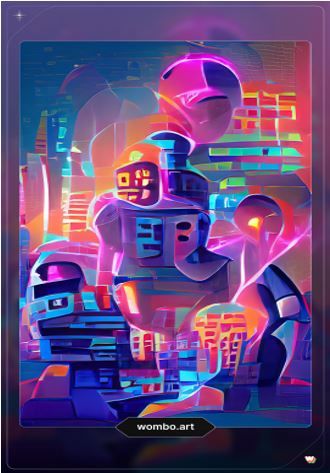How AI Masters the Creative Processes

The technical imitation of human intellectual processes, primarily using computer systems, is known as artificial intelligence. It seeks to enhance computer abilities that are comparable to human cognition, such as reasoning, learning, and problem-solving. Any creative endeavour that is brought to mind can be mastered by this intangible cognition, whether it be art, photography, or even writing. It is truly amazing how well artificial intelligence can handle all of these tasks. In just a few moments, it can surprise and delight us with a new creation.
Artificial intelligence is the technological simulation of human intellectual processes, primarily via computer systems. It is the study of how the human brain thinks, learns, makes decisions, and solves problems. The purpose of artificial intelligence is to improve computer functions equivalent to human cognition, such as thinking, learning, and problem-solving. This immaterial intellect can also master any creative activity that comes to mind.
AI, like an artist, can perfect artwork through a machine learning process. The most frequent kinds of AI art concentrate on image processing, detecting elements such as colour, texture, and typography. The models then either alter or produce new pictures. There are three major systems in which AI may produce art. A General Adversarial Network (GAN) is a system composed of two components, a generator and a discriminator, that are simultaneously trained by an adversarial process. One of the most powerful networks for image categorization and analysis is the convolutional neural network (CNN). The process of converting one input picture into the style of another is known as neural style transfer (NST). Dream by Wombo ( https://app.wombo.art ) is an excellent example of NST. With so many different art styles to choose from, all you have to do is select one and provide your prompt or a picture that will be used as a reference for the final result. The ideal image then emerges at the drop of a hat.

If art can be generated by AI, can the same be done for music? The answer is, yes, it can. Most music-based AI use deep learning algorithms and similar functions to help compose music. To add to this, one could say that a music-generating AI uses neural networks, which are enormous collections of computer components that aim to replicate the functioning of the brain. A budding musician could just feed a lot of similarly themed music to this neural network, and it would learn patterns (from which it would generate the desired music) — quite like how the human brain does by repeatedly being shown things. One example of a music-generating AI would be AIVA. AIVA is an AI-powered music generator that utilises deep learning algorithms trained on more than 30,000 human compositions and runs in your web browser. The AI model has spent years being trained to create complete arrangements in practically any musical genre.

Photography is an art that’s been around for a long time. It is constantly changing, developing, and evolving. The latest, most amazing breakthrough would be the incorporation of AI into the world of photography. The awe-inspiring thing about this comes mostly from how AI helps your camera better understand what it's looking at. Google Photos is a pretty good representation of how powerful AI and photography are when they are put together to work in cohesion. After this app came about, thousands of untagged photographs from its users' unorganised libraries were converted into searchable databases overnight. These days, anyone with a smartphone has a photography-based AI installed on their smartphone, whether or not they are aware that the said program or app is an AI. After all, facial and environmental recognition has become pretty popular lately.
Art and music are not the only things AI can assist us with. Writing is also a skill that AI can master by automating one or more phases in the process of generating content for marketing purposes. AI writing helpers may assist with ideation, structure, tone, and even style, freeing up marketers' time to concentrate on their talents and generate fresh ideas. AI writers may also create sentences and paragraphs for editors to approve of and subsequently publish. The Generative Pre-Trained Transformer (GPT-3) from OpenAI, which was released in 2020, is a typical new model. GPT-3 uses deep learning to produce human language.
Isn't it incredible how AI can master all of these processes? It may satisfy us with an astonishing and creative creation in only a few seconds, from creating artwork using machine learning to developing words and paragraphs for editors to approve and then publish. There is nothing AI cannot accomplish. Not to add that AI's face and environmental recognition have recently gained popularity, as has its capacity to create full arrangements in almost any musical genre. All of this demonstrates to students, employees, and even parents what machines, computers, and other modern equipment are capable of. Its power to produce amazing artwork, writing, photos, and music has impressed us all.
References
Byford, S. (2019, January 31). How AI is changing photography. The Verge. Retrieved July 31, 2022, from https://www.theverge.com/2019/1/31/18203363/ai-artificial-intelligence-photography-google-photos-apple-huawei
Carlson, J. (2022, January 27). What is computational photography?Popular Photography. Retrieved July 31, 2022, from https://www.popphoto.com/how-to/what-is-computational-photography/
Constant, N. (2021, October 29). AI Photography - How is AI Changing the World of Photography? Expert Photography. Retrieved July 29, 2022, from https://expertphotography.com/ai-photography/
Deep Convolutional Generative Adversarial Network. (2022, January 26). TensorFlow. Retrieved July 29, 2022, from https://www.tensorflow.org/tutorials/generative/dcgan
Gehles, S., & Arnold, V. (2021, May 21). GPT-3 - What is it and how does it work? neuroflash. Retrieved July 29, 2022, from https://neuroflash.com/blog/gpt-3/
Neural style transfer. (2022, June 28). TensorFlow. Retrieved July 29, 2022, from https://www.tensorflow.org/tutorials/generative/style_transfer
Özkardes, Y. (2022, January 16). Why AI Writing Assistants are a Good Thing for Content Creation. Entrepreneur. Retrieved July 29, 2022, from https://www.entrepreneur.com/article/402282
Romero, A. (2021, May 24). A Complete Overview of GPT-3 — The Largest Neural Network Ever Created | by Alberto Romero. Towards Data Science. Retrieved July 29, 2022, from https://towardsdatascience.com/gpt-3-a-complete-overview-190232eb25fd
Romero, A. (2021, June 20). Understanding GPT-3 In 5 Minutes | by Alberto Romero | Medium. Towards Data Science. Retrieved July 29, 2022, from https://towardsdatascience.com/understanding-gpt-3-in-5-minutes-7fe35c3a1e52
Schmidt, M. (2022, April 18). How to Generate Music with AI. Rootstrap. Retrieved July 29, 2022, from https://www.rootstrap.com/blog/how-to-generate-music-with-ai/
Sciforce. (2021, September 17). What is GPT-3, How Does It Work, and What Does It Actually Do? Medium. Retrieved July 29, 2022, from https://medium.com/sciforce/what-is-gpt-3-how-does-it-work-and-what-does-it-actually-do-9f721d69e5c1
Singh, M. (2017, September 4). Artistic Style Transfer with Convolutional Neural Network | by Manjeet Singh | Data Science Group, IITR. Medium. Retrieved July 31, 2022, from https://medium.com/data-science-group-iitr/artistic-style-transfer-with-convolutional-neural-network-7ce2476039fd
Tabora, V. (2019, October 22). Using AI For Computational Imaging Applications | by Vincent Tabora | Becoming Human. Becoming Human: Artificial Intelligence Magazine. Retrieved July 31, 2022, from https://becominghuman.ai/using-ai-for-computational-imaging-applications-8ff390307e65
Tham, C. (2022, March 22). What is AI Art? How Artists Use AI, and How To Generate Your Own. Domestika. Retrieved July 29, 2022, from https://www.domestika.org/en/blog/10352-what-is-ai-art-how-artists-use-ai-and-how-to-generate-your-own
Tham, I. (2021, August 25). Generating Music Using Deep Learning | by Isaac Tham. Towards Data Science. Retrieved July 29, 2022, from https://towardsdatascience.com/generating-music-using-deep-learning-cb5843a9d55e
Viv. (2017, June 9). Creating Art with Conv Neural Nets | by Viv. Towards Data Science. Retrieved July 31, 2022, from https://towardsdatascience.com/creating-art-with-conv-neural-nets-3ea5ebd7ef
Zelenskaya, L. (2021, June 11). How AI music generators change the music industry. Icons8 Blog. Retrieved July 29, 2022, from https://blog.icons8.com/articles/how-ai-music-generators-change-the-music-industry/
Author Information:
Fathimath Enaal Ilyas, Iskandhar School, Maldives.
Aminath Ain Abdulla Rafeeu, Jamaluddin School, Maldives.
Mariyam Eshal Munawwar, Rehendhi School, Maldives.
Aishath Rym Abdul Rasheed, Jamaluddin School, Maldives.
Aishath Malaak Binthi Mahmoodh, Bright Way International School, Maldives.
Cite this article as:
Fathimath Enaal Ilyas, Aminath Ain Abdulla Rafeeu, Mariyam Eshal Munawwar, Aishath Rym Abdul Rasheed, and Aishath Malaak Binthi Mahmoodh, How AI Masters the Creative Processes, theCircle Composition, Volume 3, (2022). thecirclecomposition.org/how-ai-masters-creative-processes/
